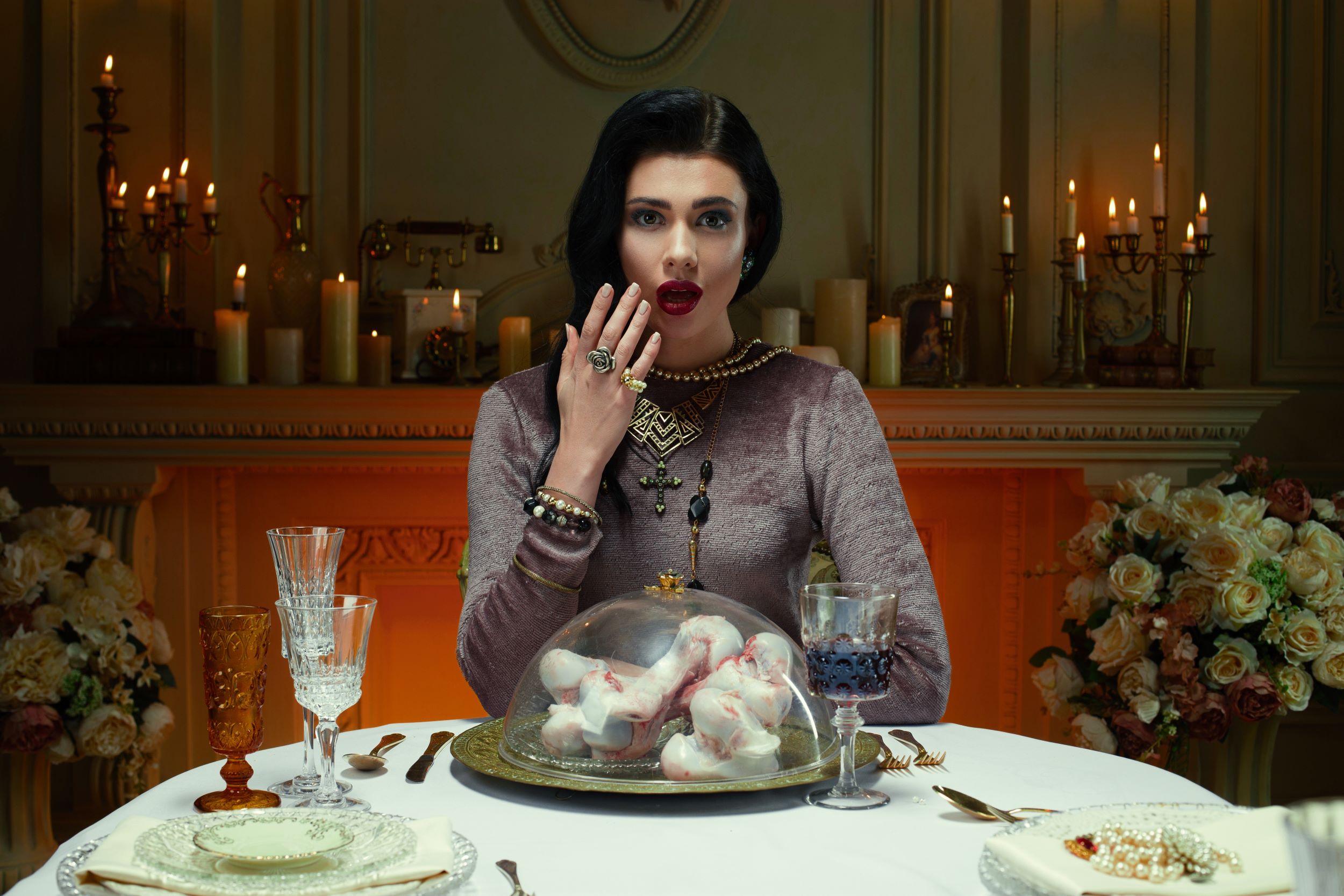
Back in the eighties, I read Peter Singer and vowed to stop eating animals. The artist Rick Gibson read Peter Singer and decided it was okay to start eating humans.
The hosts of the Hi-Phi Nation podcast interviewed him just recently, because news like this does not get old. He explained that he was interested in moral problems, and there are, it turns out, no laws against cannibalism. So when a friend saved his tonsils for Gibson, thinking he might use them in his art, he decided to eat them instead. As performance art.
They looked like a cocktail party sausage, he recalls, but because a vein had run through the middle, there was now a hole. Sliced, they were a lot like unstuffed black olives. Gibson’s first challenge was how to not suck down the formaldehyde that had preserved them. He spent weeks rinsing the tonsils in a succession of baths, then replaced the formaldehyde with nontoxic alcohol. Vodka, one hopes. Then he donned a suit and tie—“This is haute cuisine, right?”—and set up in the middle of an open-air public market. When a crowd gathered, he made himself a little canapé: a cracker spread with cream cheese and topped with two slices of human tonsil and a sprig of parsley, then washed it down with a glass of white.
Next, because feminists had been outraged by the freeze-dried uterus he used in a previous work of art, he ate a pickled testicle. This was about species, he said, not gender.
The podcast hosts—Barry Lam, associate professor of philosophy at Vassar College, and Christina van Dyke, visiting professor of philosophy at Columbia University—listen and swallow hard. They intend to use Gibson’s performance of cannibalism as an entry point to explore Christian beliefs about the resurrection of the body. Early Christians were terribly worried about cannibals. Not because the practice was nauseating or sinful, but because if a cannibal kept it up, soon his body would be composed almost entirely of matter that once belonged to another human being. So what would happen when it came time to resurrect everybody’s body? Would some bodies have gaping holes because part of them had been snacked upon and now belonged to a different body?
I always did have problems with the notion that the body would be resurrected, but they were practical problems, like—at what age? And would I have to be plump still?
This is a problem of personal identity, van Dyke reflects. “If we’re bodies, and not just these immaterial souls, then if our bodies are constituted by part of someone else’s body, then how do you make sense of these two different people who share these parts?”
Catholics are already accused of cannibalism because of their beliefs about Holy Communion. The doctrine of transubstantiation flatly states that at the Eucharist, one partakes of Jesus’s flesh and drinks his blood. Only the appearance of wafer or wine remains; the entire substance has been changed. The mystery of how this happens is said to be central to Catholicism.
Some theologians smile and call this metaphor, and about one-third of U.S. Catholics agree. But the doctrine did encourage the members of the Uruguayan rugby team, crash-landed in the Andes, to eat one another; if one ate Jesus’s body every Sunday, why not the flesh of one’s friends?
At least, that is what one survivor told the press in self-defense. Years later, a reporter asked if they’d really been thinking about Communion at the time, and he said, “No, we were hungry.”
It happens. In Cannibalism: A Perfectly Natural History, zoologist Bill Schutt points out that not only do many animals eat their young, but human body parts were on the imperial menu in ancient China, and during Mao’s Cultural Revolution, “starvation cannibalism” was so prevalent that people traded children to avoid killing and eating their own kids.
Such things shock us. We might say, “Oh, I could just eat you up!” when we kiss a baby’s chubby cheek, or use “eat” as slang for oral sex (though that is mainly slurping and devoid of solids), but we do not like the idea of humans eating humans.
Which is a fairly silly taboo, because sharks eat people, and people eat cows, and dead people feed worms. We are all made up of bits of one another. Surely it is better to allow your body to keep the universe going than to pop awake in that familiar old container?
Read more by Jeannette Cooperman here.
